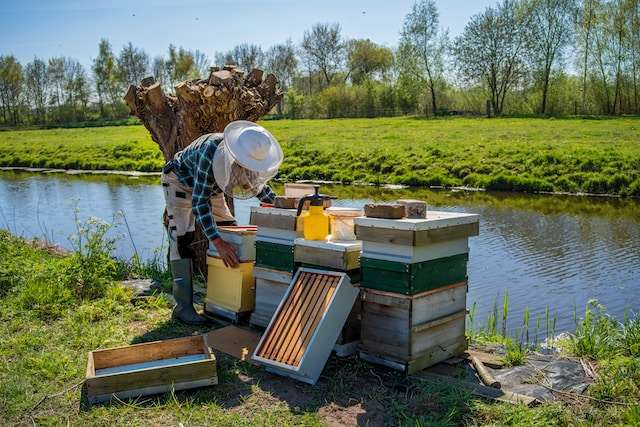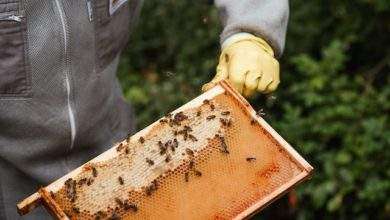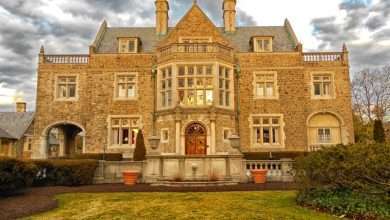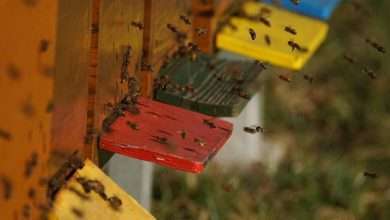Beekeeping in Slovakia: An Introduction to an Enduring Tradition

Beekeeping in Slovakia has been integral to the country’s culture and traditions for centuries. The practice of tending these bees and the variety of honey, propolis, and wax that they produce are still a source of pride and community for many Slovakian households.
While traveling in Europe, I managed to interview a Slovakian beekeeper, Arpad Németh about beekeeping and his business in Slovakia. These videos are included in this article.
History of Beekeeping in Slovakia
In the lush, picturesque landscapes of Slovakia, a country with a rich agricultural heritage, beekeeping has long been a cherished practice.
Origins and Early Development of Beekeeping in the Region
Ancient Beginnings:
- Beekeeping in Slovakia can be traced back to ancient times, with evidence of early honey production found in archaeological findings.
- The indigenous forests of the region provided an ideal habitat for wild bees, attracting early settlers to cultivate their honey production.
- The ancient Slavs, who inhabited the area, revered bees for their medicinal properties and spiritual symbolism, fostering a deep connection to beekeeping.
- In the 14th century, beekeeping in Slovakia experienced a period of decline, as the Hussite movement spread through the region and wreaked havoc on the traditional practices. However, despite this decline, beekeeping continued to be practiced in some areas.
Monastic Beekeeping:
- During the medieval era, monastic orders played a significant role in the development of beekeeping in Slovakia.
- Monasteries and convents across the region practiced beekeeping, both for honey production and for the beeswax needed for candle making and religious ceremonies.
- These religious institutions maintained extensive apiaries and contributed to the spread of beekeeping knowledge among the local population.
Rise of Professional Beekeepers:
- By the 18th and 19th centuries, beekeeping gradually transitioned from a domestic activity to a profession in Slovakia.
- Professional apiarists emerged, specializing in beekeeping and honey production on a larger scale.
- These skilled beekeepers introduced innovations such as moveable frame hives, which revolutionized the industry by allowing for more efficient hive management and honey extraction.
Traditional Slovakian Beekeeping Techniques
Log Hives:
- A distinctive feature of Slovakian beekeeping is the use of log hives, known as “Klátika” or “Kupá.” These traditional hives are made from hollowed-out logs and have been used for centuries.
- The log hives provide insulation and maintain a stable microclimate, creating a nurturing environment for the bees during harsh winters and scorching summers.
Straw Skeps:
- Another traditional beekeeping technique in Slovakia involves the use of straw skeps, known as “Úl.” This ancient method involves weaving a skep with dried straw, creating a dome-shaped hive.
- Straw skeps were used by village beekeepers who preferred a simple and cost-effective alternative to log hives. However, their usage has declined in modern beekeeping practices.
Bee Pastures:
- Slovakian beekeepers have long recognized the importance of diverse vegetation for the well-being of their honeybees.
- They deliberately create bee pastures abundant in nectar-bearing plants, such as fruit trees, wildflowers, and clover fields.
- These bee pastures not only provide ample food sources for the bees but also contribute to the unique flavors and aromas found in Slovakian honey.
Honeybee Species in Slovakia
Here are some of the honeybee species commonly found in Slovakia, exploring their characteristics, behavior, and significant role within the natural world. From industrious workers to remarkable queens, these fascinating insects are essential for the sustainability of both plants and wildlife.
Honeybee Species Commonly Found in Slovakia:
Apis mellifera carnica:
- Also known as the Carniolan honeybee, Apis mellifera carnica is one of the most widespread honeybee subspecies in Slovakia.
- Carniolan honeybees are renowned for their gentle nature, making them a preferred choice for beekeepers and an excellent option for beginners.
- These bees have a light grey or black color, with a tendency to be slightly smaller in size compared to other honeybee species.
- Adapted to the mountainous regions of Slovakia, Apis mellifera carnica shows remarkable resilience and efficiency during foraging.
Apis mellifera ligustica:

- Commonly known as the Italian honeybee, Apis mellifera ligustica can also be found in Slovakia, although it is less prevalent compared to the Carniolan honeybees.
- This species showcases a distinctive yellow coloration, making them easily recognizable.
- Italian honeybees are generally known for their exceptional honey production capabilities, making them a favorite choice for commercial beekeeping operations.
- With their gentle temperament and ability to adapt well to different climates, Apis mellifera ligustica honeybees have successfully established themselves in various regions of Slovakia.
Beekeeping Equipment and Techniques in Slovakia
Whether you are a beginner or an experienced beekeeper, understanding the equipment and techniques employed in Slovakia can enhance your knowledge and success in the field.
Essential Equipment for Beekeeping in Slovakia
Beehives
- Traditional wooden beehives: Slovakia has a long-standing tradition of using wooden hives, typically made from locally sourced pine or spruce wood. These hives provide excellent insulation and ventilation.
- Modern beekeeping systems: In recent years, modern polyurethane hives have gained popularity due to their durability and ease of maintenance.
Frames and Foundations
- Wooden frames: Generally made from pine or fir wood, frames provide support for the bees’ honeycombs and brood. They are essential for maintaining the hive’s structure.
- Wax foundation sheets: These sheets are mounted on frames to guide bees in building their honeycombs. They encourage proper bee spacing and increase honey production.
Protective Gear
- Beekeeping suits: To ensure personal safety, beekeepers in Slovakia commonly wear full-body suits made from lightweight and breathable materials, protecting them from bee stings.
- Veils and gloves: A protective beekeeping veil, combined with durable gloves, shields the face and hands from aggressive bee behavior.
Smokers
- Bee smokers: These handheld devices produce cool smoke that helps calm the bees during hive inspections. In Slovakia, traditional fuels like dry leaves, straw, or pine needles are commonly used.
Tools
- Hive tool: A beekeeper’s indispensable tool, the hive tool, helps separate hive components, lift frames, and scrape off excess propolis or beeswax.
- Bee brush: Gently brushing bees off frames, supers, or the beekeeper’s clothing aids in minimizing harm to the bees.
- Uncapping knife: Used during honey extraction, the uncapping knife assists in removing the wax caps off honeycomb cells.
Traditional and Modern Beekeeping Techniques in Slovakia
Traditional Techniques
- Swarm catching: Beekeepers in Slovakia have a long history of capturing swarms to prevent them from moving into unwanted areas and to establish new colonies.
- Skep beekeeping: An ancient method that involves using skeps (domed basket-like structures) as beehives. Although rarely practiced nowadays, it serves as a fascinating part of Slovakia’s beekeeping heritage.
Modern Techniques
- Hive management: Utilizing observation hives, beekeepers can closely monitor the bees’ behavior and health without disturbing the main colony. This provides valuable insights for effective hive management.
- Queen rearing and selection: Advanced techniques for raising queen bees, such as grafting larvae or using queen excluders, have become popular among Slovakian beekeepers, allowing them to control the genetic traits within their colonies.
Beekeeping Regulations in Slovakia
In Slovakia, beekeeping is regulated to ensure the welfare of bees and to maintain the integrity of the industry. By following these regulations, beekeepers contribute to the sustainable and responsible practice of beekeeping, thereby safeguarding the health and productivity of bee colonies.
Through ecological certifications, quality regulations, and educational support, Slovakia strives to promote a thriving and environmentally conscious beekeeping sector.
Challenges Faced by Beekeepers in Slovakia
Beekeepers in Slovakia encounter numerous challenges and threats that hinder their efforts to maintain healthy honeybee populations.
Common Challenges and Threats to Beekeeping in Slovakia
- Pesticide Use: Beekeepers in Slovakia face the persistent challenge of pesticides, which can have detrimental effects on honeybees. The widespread use of chemical pesticides in agricultural practices poses a significant threat by directly impacting the bees’ health and foraging habits.
- Varroa Mite Infestation: The Varroa mite infestation is a major concern among beekeepers in Slovakia. These parasitic mites attach themselves to bees and weaken them, making them susceptible to diseases and overall population decline.
- Loss of Natural Habitats: With increasing urbanization and land-use changes, honeybees face a significant loss of natural foraging habitats. This loss restricts their access to diverse and nutrient-rich pollen sources, which can adversely affect their nutrition and overall health.
- Climate Extremes: Extreme weather events, such as prolonged droughts or heavy rainfall, pose hurdles for beekeepers in maintaining stable honeybee colonies. Precipitation fluctuations affect the availability of nectar and pollen, leading to food scarcity and reduced honey production.
Honey and Other Bee Products in Slovakia
Now, we will explore the various types of honey produced and discussing other valuable bee products such as propolis, beeswax, and royal jelly.
Honey in Slovakia: A Glimpse of Sweetness
Honey holds a special place in Slovakian culture and cuisine, where it has been treasured for centuries. The country’s diverse flora offers an assortment of nectar sources, resulting in a wide variety of delicious honey types. Here are some notable ones:
- Acacia Honey: Known for its light and delicate flavor, acacia honey is highly sought after for its mild floral aroma. It is prized for its clarity and remains liquid for a longer time due to its high fructose content.
- Linden Honey: Produced from the blossoms of linden trees, this honey exudes a distinctively herbal and minty flavor. Linden honey is esteemed for its soothing properties and is often used to ease respiratory issues.
- Forest Honey: Gathered from the enchanting forests of Slovakia, this honey derives its distinct flavor from a blend of wildflowers and trees. It is characterized by its dark color, robust taste, and earthy undertones.
- Sunflower Honey: Slovakia’s vast sunflower fields provide an abundance of nectar for these bees to create a unique honey variety. Known for its rich golden color and slightly nutty taste, sunflower honey is a delightful addition to any pantry.
Beyond Honey: Unlocking the Hive’s Treasures
While honey takes center stage, Slovakian beekeepers also produce a range of other remarkable bee products that offer numerous health benefits and practical uses. Let us explore some of these valuable products:
- Propolis: Often referred to as “bee glue,” propolis is a resinous substance collected by bees from tree buds. It has long been recognized for its natural antibacterial and antifungal properties and is used in various medicinal preparations, including creams, ointments, and tinctures.
- Beeswax: This versatile product is crafted by bees to build their honeycombs. Slovakian beekeepers harvest beeswax for its countless applications. From candles and cosmetics to wood conditioning and leather preservation, beeswax is treasured for its natural scent and soothing properties.
- Royal Jelly: This precious substance is a secretion created by young worker bees and fed to the queen bee. Rich in nutrients and proteins, royal jelly is renowned for its potential health benefits, including boosting immunity, enhancing skin health, and aiding in fertility.

Conclusion
Beekeeping in Slovakia is one of the country’s longest-held and most popular traditions. The practice of caring for honeybees began in the 5th century and continues to the present day, with numerous organizations and courses helping to educate and train new beekeepers on the art of beekeeping.
Beekeeping in Slovakia provides powerful environmental, economic, and social benefits, as it contributes to the proliferation of bee species and pollinators, and encourages ecologically responsible practices. For many beekeepers, beekeeping is a way of life, and a practice infused with a strong sense of community.
FAQs about Beekeeping in Slovakia
What makes beekeeping in Slovakia unique compared to other regions?
- Beekeeping in Slovakia has a long-standing tradition, deeply rooted in the country’s rich cultural heritage. The diverse landscape, abundant floral resources, and favorable climate contribute to the production of high-quality honey with unique flavors.
- Additionally, Slovakia’s beekeepers prioritize sustainable and eco-friendly practices, ensuring the well-being of the bees and the environment.
Is beekeeping suitable for urban areas in Slovakia?
- Yes, beekeeping can be adapted for urban areas in Slovakia. While rural areas offer more abundant floral resources, urban environments often surprise us with diverse foraging options for honeybees, such as gardens, parks, and green spaces. However, it is essential to consider local regulations and interact with fellow residents to ensure harmony within the community.
Are there any specific challenges in beekeeping in Slovakia?
- While beekeeping in Slovakia is generally rewarding, there are a few challenges to be aware of. As with anywhere, certain diseases and pests can affect honeybee colonies. Additionally, adverse weather conditions, such as harsh winters or prolonged droughts, can impact honey production and colony survival. Proper care and proactive measures are necessary to overcome these challenges.




